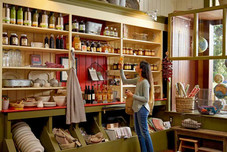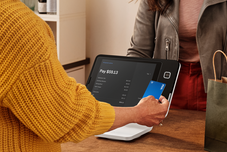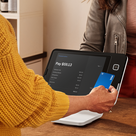Table of contents
This article was written by David Fox from Co. Exist
Imagine heading home after Thanksgiving dinner without having to deal with the rush of midnight traffic, news footage of customers fighting over a steeply discounted TV, and simply bypassing the tradition where families take to the mall, full on turkey but hungry for sales.
I predict this year, consumers will take to their couches, turning to e-commerce and ditching brand loyalty for the sake of safety and convenience. Not only are consumers adjusting their plans this holiday season, but many retailers are throwing a wrench into the most important shopping day of the year with some stores choosing to close on Thanksgiving and Amazon pushing up Prime Day to fall.
Long gone are the days of “Black Friday” for in-store shopping and solely “Cyber Monday” for online shopping. In a reimagined pandemic landscape, we’re moving into an era of “online first” where consumers can shop throughout the season for deals versus waiting for a one-day event.
But does online first mean Black Friday is done for good? In the traditional sense, yes. Typically, Black Friday has been the pinnacle of the holiday season, marking the beginning of a season of deals and massive crowds lining up for the chance to score big.
Some retailers have used the holiday as a chance to get ahead of competitors, pushing boundaries by opening stores a day early, so they can be available for eager consumers ready to kick off the holiday shopping season before Thanksgiving dessert even hits the table.
Yet right now, all signs indicate that 2020 might be the first time in a long time that we actually enjoy Thanksgiving; a year when doorbuster deals and mad rushes for hot-ticket items finally come to an end, and consumers can relax without the pressure to get the best discounts before they’re gone while possibly spending more than anticipated.
While Black Friday may be “canceled” this year, replaced by online discounts and a much more restrictive in-store experience, one thing is for sure: consumers are driven by deals and as soon as discount season arrives, holiday shoppers are bound to start spending.
But what exactly can we expect to be different this holiday season compared to the last?
Holiday deals will start earlier and last longer
We can expect a much earlier and longer-lasting season of holiday deals. With Amazon shifting their annual Prime Day from July to October, other retailers have followed suit, offering their promotions to benefit from the halo effect we’ve seen in earlier years.
Retailers have wise up, as well. Many businesses offer discounts in the days leading up to Prime Day to jump-start their deals before the online giant’s and attract their own early-holiday shoppers.
Amid an economic downturn and an unemployment rate well above pre-pandemic times, shoppers are more price sensitive than ever. Most consumers won’t be waiting until Black Friday to buy presents if they are presented with early discounts, especially considering consumers’ comfortability with spending online.
Additionally, starting sales earlier allows retailers to avoid the typical frenzy of consumers crowding stores and, instead, provide consumers with more time (and for stores, more inventory) to tackle their shopping lists and plan ahead for delivery times.
Expanded choices for shoppers
According to a report from Adobe, total online spending in May 2020 hit $82.5 billion. Moreover, combined online spending in April and May increased by 7 percent holiday spending in 2019, in the months of November and December. With such an unprecedented acceleration in e-commerce this year, online shopping will be the preferred choice for consumers who are still uncomfortable with crowds and want to shop safely and securely from their homes.
Linked to this is the introduction of an entirely new segment of people to e-commerce, who, because of the pandemic, will turn to online shopping for the first time.
Many of these newcomers will continue to browse online this holiday season because of the ease and convenience they have experienced. Additionally, with more time at home consumers have found new channels and forms of consumption such as mobile apps and social commerce, transforming the 2020 holiday season into a time of checking out by swiping up.
And the data points to growing interest in these modern channels. According to a survey by Salesforce, 37 percent of respondents said they were more interested in mobile-app shopping than they were last year, and 22 percent said the same about shopping via social media, showing consumers are receptive to gift-shopping while scrolling from their couches.
Growing use of online buying, curbside, and in-store pickup
Free, fast and discounted shipping has always been a major factor in holiday purchasing, but this year, thanks to COVID-19, we’ll see a new shipping option take center stage for consumers: Buy online, pick-up in-store (BOPIS, for short).
In-store and curbside pickup has gained traction during the past few months, and we can expect it to continue to play a big role during the holiday season as consumers want to minimize human contact during in-store shopping trips.
Additionally, social distancing measures in distribution centers along with increased shipping surcharges make buying online and picking up in-store the best option to avoid delayed delivery and expensive charges. We can expect an entirely new segment of consumers looking for this shipping option as they decide which retailer to buy from this holiday season.
. . . But in-store options will remain
Smelling a sugar-cookie candle, touching a soft sweater, tasting a sample, or coming across an item,last-minute, while you wait in the checkout line; these are all parts of the shopping experience that can’t be replicated in a digital world. While most consumers will stick to online shopping this holiday season, retailers who remain open will be focusing on providing consumers with a safe and positive experience.
This year, there will no longer be the mass crowds associated with holiday shopping, with stores limiting in-store capacity. Instead, consumers can expect increased security presence, face mask protocols, and contactless payment options to ensure proper social distancing procedures while also creating a seamless (and worry-free) shopping environment.
While this holiday shopping season will look much different than the last, one thing likely won’t change: consumers hunting for the very best deal. We won’t see a Black Friday full of crowds and doorbuster deals, but instead a much earlier and longer shopping season with more channels, extended deals, and prioritized safety precautions.
Some stores may be closed, fully open, or somewhere in between, while consumer comfort levels will vary. However, as soon as discount season arrives, holiday shoppers are bound to be there—regardless of whether or not their shopping falls on a Friday.
This article was written by David Fox from Co. Exist and was legally licensed through the Industry Dive publisher network. Please direct all licensing questions to [email protected].
![]()












